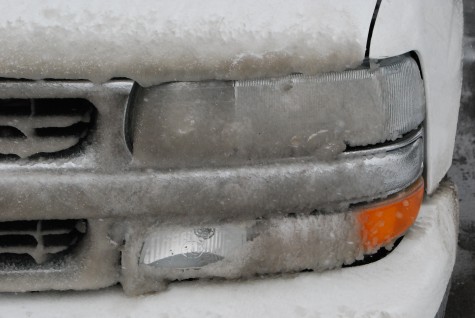 If you should be a card carrying gardener in my area, no doubt you have been to Telly’s. If you have not, it is located on John R north of Big Beaver. I have been shopping there for over 20 years. I have never known anyone who had a better working knowledge of an incredible range of plants. I have known few whose enthusiasm for plants matches his. Wildflowers-he is a source. Great roses, unusual hostas, specimen hostas, great grasses, the largest population of dianthus and other rock garden plants, the tried and true, and the cutting edge on perennials of all descriptions, great annuals-great tropicals. His place is the physical incarnation of a first rate horticultural encyclopedia. Plan to spend some time. It will be time well spent, no matter what time of year you go.
If you should be a card carrying gardener in my area, no doubt you have been to Telly’s. If you have not, it is located on John R north of Big Beaver. I have been shopping there for over 20 years. I have never known anyone who had a better working knowledge of an incredible range of plants. I have known few whose enthusiasm for plants matches his. Wildflowers-he is a source. Great roses, unusual hostas, specimen hostas, great grasses, the largest population of dianthus and other rock garden plants, the tried and true, and the cutting edge on perennials of all descriptions, great annuals-great tropicals. His place is the physical incarnation of a first rate horticultural encyclopedia. Plan to spend some time. It will be time well spent, no matter what time of year you go.
 I called George today-I have 3 large marble planters in a very contemporary conservatory to get planted. My calls to George with a need for unusual plants, or plants in big numbers have invariably been answered. The time and effort he has spent sourcing plant material over the past umpteen years-He deserves a seat with a brass plaque at the Library of Congress, department of plants. I would vote for this. I have great respect for George-as well I should. We send people to him all the time. Detroit Garden Works features plants of size, plants I take a fancy to, some of this and a little more of that. Telly’s is a plant nation. Of course George says-I just got back from Florida with some very cool plants-when can you get here?
I called George today-I have 3 large marble planters in a very contemporary conservatory to get planted. My calls to George with a need for unusual plants, or plants in big numbers have invariably been answered. The time and effort he has spent sourcing plant material over the past umpteen years-He deserves a seat with a brass plaque at the Library of Congress, department of plants. I would vote for this. I have great respect for George-as well I should. We send people to him all the time. Detroit Garden Works features plants of size, plants I take a fancy to, some of this and a little more of that. Telly’s is a plant nation. Of course George says-I just got back from Florida with some very cool plants-when can you get here?
 My holiday and winter work is over, as are the holidays. My buying trip to Atlanta-over. Coming down with a cold-a given. I have time now to have a stinking cold, so why not. A visit to Tellys today helped reduce my irritation level.. The idea of standing in a working greenhouse full of very interesting plants sounded good. Steve and I got on the road first thing this morning. I am sure you can tell from these pictures that George likes succulents. We are not talking hens and chicks. We are talking echeverias. OK, the sum total of my knowledge is out there, once I say the e word. Want more info-go see George. Though I have no name for this plant, I so like how it looks. I like even better how these 15 e’s look in the case.
My holiday and winter work is over, as are the holidays. My buying trip to Atlanta-over. Coming down with a cold-a given. I have time now to have a stinking cold, so why not. A visit to Tellys today helped reduce my irritation level.. The idea of standing in a working greenhouse full of very interesting plants sounded good. Steve and I got on the road first thing this morning. I am sure you can tell from these pictures that George likes succulents. We are not talking hens and chicks. We are talking echeverias. OK, the sum total of my knowledge is out there, once I say the e word. Want more info-go see George. Though I have no name for this plant, I so like how it looks. I like even better how these 15 e’s look in the case.
 Tray after tray of gorgeous succulents-I snapped this wavy edged turquoise rosette succulent flat up in a second. George immediately rolled his eyes-do you need all of them? Mais Oui, George-I need them all. He gets over it quickly-he can reorder. But I understand his reaction. Gorgeous plants are so tough to let go of. We gardeners are just ordinary people after all-but we have a true passion for plants and growing that can take us over the line. Over the line-I am happy to be a member of that group.
Tray after tray of gorgeous succulents-I snapped this wavy edged turquoise rosette succulent flat up in a second. George immediately rolled his eyes-do you need all of them? Mais Oui, George-I need them all. He gets over it quickly-he can reorder. But I understand his reaction. Gorgeous plants are so tough to let go of. We gardeners are just ordinary people after all-but we have a true passion for plants and growing that can take us over the line. Over the line-I am happy to be a member of that group.
 Drocera, commonly known as sundew, is the largest genus of carviverous plants on the planet-there are at least 194 species. Plants that attract bugs, dissolve them, and ingest nutrients from them-creepy. But George has them, should you be interested. They are fascinating looking. They also look like trouble, but I did not mind this case of trouble plants one bit. January 24 I am happy to have a greenhouse to visit. How a greenhouse smells in the winter, delicious. The air is heavy with water, and the smell of soil comforts me. This winter promises to be a long one. I will be back, regularly.
Drocera, commonly known as sundew, is the largest genus of carviverous plants on the planet-there are at least 194 species. Plants that attract bugs, dissolve them, and ingest nutrients from them-creepy. But George has them, should you be interested. They are fascinating looking. They also look like trouble, but I did not mind this case of trouble plants one bit. January 24 I am happy to have a greenhouse to visit. How a greenhouse smells in the winter, delicious. The air is heavy with water, and the smell of soil comforts me. This winter promises to be a long one. I will be back, regularly.
 Tropical plants are not my forte. I am better when I am outside. But I have no problem spending time in a warm spot, with strangers. We have had overnight lows recently of 2 degrees, and 8 degrees. My choices for gardening company-not so great. Whatever gardening company I might find-fine. Telly’s is looking really good right now.
Tropical plants are not my forte. I am better when I am outside. But I have no problem spending time in a warm spot, with strangers. We have had overnight lows recently of 2 degrees, and 8 degrees. My choices for gardening company-not so great. Whatever gardening company I might find-fine. Telly’s is looking really good right now.
 I bought box after box of tropical plants for my conservatory installation tomorrow. Black, grey, and white leaved plants of a number of sizes and shapes. Different than these green and red plants whose name I do not know. No matter. I know the growing conditions for my client. I know how it is heated. I know how it is cared for. This makes it possible for me to design and plant plants whose names do not know. Margaret Dixon, who may have been the best gardener it has ever been my privilege to know, knew no names. But she could grow anything and everything, beautifully. Though she has been gone 15 years, I can still hear her saying. Ask the name last. Ask about what makes it happy first. Should you be a new gardener, skip the name, and move on to the ideal conditions. Should you be more that 100 feet away from good conditions, consider another plant.
I bought box after box of tropical plants for my conservatory installation tomorrow. Black, grey, and white leaved plants of a number of sizes and shapes. Different than these green and red plants whose name I do not know. No matter. I know the growing conditions for my client. I know how it is heated. I know how it is cared for. This makes it possible for me to design and plant plants whose names do not know. Margaret Dixon, who may have been the best gardener it has ever been my privilege to know, knew no names. But she could grow anything and everything, beautifully. Though she has been gone 15 years, I can still hear her saying. Ask the name last. Ask about what makes it happy first. Should you be a new gardener, skip the name, and move on to the ideal conditions. Should you be more that 100 feet away from good conditions, consider another plant.
 Phalaenopsis orchids mostly require what I cannot provide. Though the flowers are lovely beyond belief, I do not attempt to grow them. I like looking at them at Telly’s, and at orchid shows, and at my local botanical garden greenhouse. Shouild I ever decide to turn over my entire gardening life to the cultivation of orchids, I might consider them. But in general, I welcome plants into my gardening life that like my gardening life to start with.
Phalaenopsis orchids mostly require what I cannot provide. Though the flowers are lovely beyond belief, I do not attempt to grow them. I like looking at them at Telly’s, and at orchid shows, and at my local botanical garden greenhouse. Shouild I ever decide to turn over my entire gardening life to the cultivation of orchids, I might consider them. But in general, I welcome plants into my gardening life that like my gardening life to start with.

OK, I might make an exception for this amaryllis. Only as I might possibly provide the conditions they require to flourish. And successfully summer them over for flowers next year. This one flower alone was worth the trip today-yes, we had daytime ultra cold and snow. I am sure there is a greenhouse near you. My advice? Get out your gardening passport, and go somewhere.
















